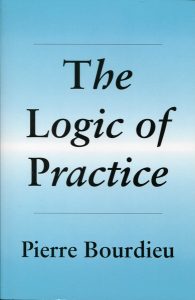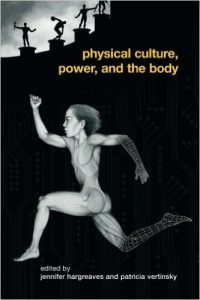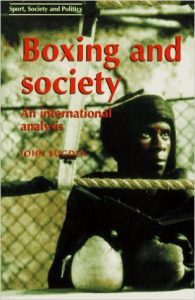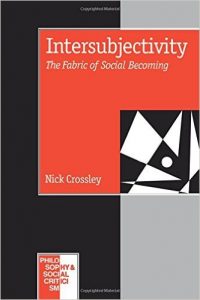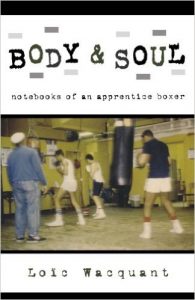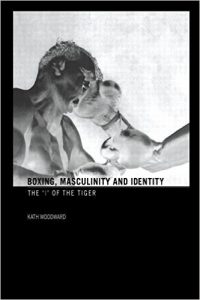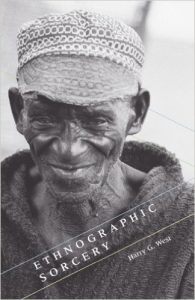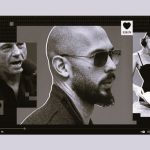By Leo Hopkinson
Doctoral Candidate in Social Anthropology
University of Edinburgh
Abstract
This article explores the body and self engendered through a boxer’s training, drawing on fieldwork conducted in boxing gyms in Montreal and Edinburgh. Contrary to contemporary anthropological accounts of the sport, I argue that training practices in these gyms instill a dualistic sense of self, evocative of Cartesian dualism. Paradoxically this is not alternative to, but concurrent with, a sense of embodied knowledge and selfhood in proficient boxers. Dualistic selfhood is traced throughout training regimes and in a boxer’s progress from novice to experienced pugilist, considering the different practices developed and encountered during this progress. I conclude by problematizing the anthropological fear of the Cartesian body. By treating the Cartesian body as a philosophical mistake rather than a social reification, social scientists working with concepts of body and self risk creating a straw man that inhibits their capacity to analyze mind-body dualism as a social construct.
Introduction
Carl is a mountain of a man: at 6’2” the former super-heavyweight boxer cuts an imposing figure. Previously a nightclub bouncer and sports nutritionist, Carl is now coowner of The Clover Boxing Gym in Montreal. Loud and enthusiastic, Carl is The Clover’s patriarch and beating heart. While he is not necessarily first into the gym in the morning, he is last to leave at night; his gym is his passion. He is actively interested in his boxers, whether they are novices or professionals, and always has time to check in with them:
“Wassup baby?” Carl booms across the gym floor at me.
I apologize for not having been there the last week.
“Don’t worry about it, just checking up on you because I hadn’t seen you in a while, where you been man?”
[178]I first met Carl in September 2010 when I began training regularly at The Clover. Under Carl’s guidance I trained in earnest for the first time and competed in my first amateur bout in May of the following year. It was at The Clover, as a novice boxer under Carl’s tutelage, that I first noticed and became subject to the dualistic schema of the sport.
Located on the first floor above a cheap burger joint, overlooking a busy intersection, the Clover Boxing Gym comprises a single ring in an L-shaped space; seven or eight heavy punching bags litter the rest of the room. The two inside walls of the “L” are lined with mirrors, running from two feet off the ground to eight feet up the wall. Two small changing rooms, male and female, are separated from the main space by a three-quarter-height partition wall. A smaller, rectangular room adjacent to the main space is also lined with mirrors along one side and hosts five heavy bags at the end nearest the window. A mirror is visible from any given point on the gym floor, including in the changing room. Like the archetypal boxing gym, The Clover sports minimalistic interior décor. Posters of former and current Canadian champions adorn the whitewashed walls: Adonis Stevenson, Jean Pascal, and Dierry Jean, among others. Air conditioning ducts and water pipes crisscross the ceiling, and a bank of windows on the wall opposite to the mirrors look out over the intersection below.
The Clover is a multilingual space in a multilingual city, serving a diverse boxing community. While I trained there, The Clover hosted boxers from Montreal’s Lebanese, sub-Saharan African, Quebecois, North African, Eastern European, Southeast Asian, and central European communities, to mention but a few of the groups that contributed to the gym’s diverse membership. Training at The Clover is conducted in English and French, all coaches are bilingual, and all written materials at the gym are in both English and French.
The bank of windows overlooking the intersection has become opaque with condensation—the sweat pouring off bodies inside is in stark contrast to the bitter Montreal winter on the other side of the glass: it is February 2011. Carl works with three boxers including me in the ring. On his hands are the padded oval mittens known ubiquitously throughout the boxing world as “pads.”1 We throw several combinations each at the pads then circulate around the ring, each of us spending equal time with Carl. As we shuffle around, Carl barks increasingly difficult combinations at us, focusing on the specific weaknesses he perceives in our technique. Carl is trying to increase the power in my straight right and right hook. I don’t throw my hips into the punch enough or rotate my back foot effectively, preventing the full transfer of my weight and resulting in less power:
“I wanna see you throw those hips through, concentrate baby!”
I throw the jab, right hook again, but it’s not good enough.
“You gotta move the hips; rotate your foot like this.” Carl imitates my action then demonstrates what he wants from me in what resembles a bizarre dance move. Despite his intimidating frame he rotates his hips, [179]swings his shoulders, and pivots on his toe with the ease and grace of a ballet dancer. I imitate him and as I’m doing so he guides my hips with his great paws. Having gone through this miniature dance he swings up the pads again.
“Jab, right hook!”
I throw the combination and concentrate on moving my hips and pivoting.
“Crack!” the punch lands with the satisfying snap of a well-timed, sharply aimed blow.
“Yeah baby! That’s what I’m talkin’ about!” He grins broadly and I shuffle around the ring.
In the spare moments when I’m waiting my turn again I repeat the movement, focusing on my hips and rear leg. We rotate around and I’m up in front of Carl again.
“Show me that big right hand baby! Jab, right hook!”
As I throw, I focus solely on my right hip. I imagine what it looks like and it becomes hypersensitive. I feel my shorts rub against the skin of my hip as I twist through the punch. The punch lands but there’s no resounding crack. I’m disappointed and confused.
“You gotta keep that elbow up as you throw, that’s where the power comes from!”
I throw a slow motion punch and Carl takes hold of my arm, hands like canoe paddles in the pads, and lifts the elbow. I had dropped my elbow as I threw the punch; I was too focused on the hips and the foot. He guides my elbow again, letting me experience bodily how the punch should be thrown. He calls the punches again and I throw the punch, concentrating on my elbow.
“Crack!”
“That’s good, but keep those hips moving through, bury it [the punch into the pad] with those hips. Bury it!” He demonstrates the full movement again.
“Damn, forgot about the hips!” I think to myself as I shuffle around; the beat goes on.
This episode, typical of coach-novice interaction in all three gyms I worked in, demonstrates clearly how during a boxer’s training the body is continually objectified, and further objectified in parts. Carl moves my limbs individually, objectifying each as he does so. Furthermore the way Carl urges me to actively articulate subsections of my body—twist my hips or raise an elbow—shows how each body part is conceptualized as subject to the individual’s mental control. Cartesian dualist philosophy posits that the material body is separate from, and subject to in a machinelike way, the mind, which transcends material perception. Breaking down the body into units as in the above episode—an arm, a leg, an elbow, a foot—mirrors the [180]process by which Ian Hacking (2006) and Stefan Ecks (2009) argue a Cartesian self is generated through biomedical engineering.
At the beginning of every training session, Carl’s boxers would shadowbox in front of a mirror for ten minutes. While they did so, he would sit on the corner of the ring or pace up and down between them, looking them up and down and constantly reminding them to look up into the mirror. Occasionally he would lower his voice and talk with an individual; by demonstrating a movement with his own body and articulating theirs with his enormous hands, Carl ensured each boxer experienced bodily, and felt, the right technique with which to throw a punch. Before leaving them to practice he would remind the boxer to watch an elbow or look to see their foot pivoting in the mirror. It is in the routine practices of the gym— such as the constant objectification of the body using mirrors—rather than in the exceptional circumstances of a bout, that boxers’ selfhood develops a profoundly dualistic slant.
While demonstrating how technique is learned by way of objectifying the body in a dualistic way, this vignette also shows how embodied, sensory engagement is key to creating this perception of selfhood. The sensing body derives information in many ways, both on the part of the coach and the boxer: learning to associate the “satisfying snap” of the pad with a correctly delivered punch; Carl’s physical touch when articulating boxers’ limbs, which allows them to experience the embodied sensation of the correct movement; or the sensation of power that Carl feels when he receives a well-delivered punch, prompting him to shout, “Yeah baby! That’s what I’m talkin’ about!” To know that a punch has been delivered correctly from the “crack” that it produces when it hits the pad is a faculty of engagement as sensing, sensory body, an association confirmed by the sensory perception of the coach, both in hearing the noise and feeling the punch on the pad. Novices learn a dualistic appreciation of self by objectifying their body in individual parts, while beginning to engage with the sport as embodied, sensory subjects.
Dualism as emergent selfhood
Building on George H. Mead’s criticism of Cartesian dualism (1967), Nick Crossley argues that the Cartesian subject, the “mind” that Descartes perceives as our essence, is “an emergent property of social interaction” derived from intersubjective engagement with other actors in the world (2011: 84).2 Crossley posits, “we do, through interaction, become capable of reflexive thought” (2011: 86). Both Mead’s [181]and Crossley’s work debunks the myth of the Cartesian schema as a true reflection of our being in the world, positing that it is derived from intersubjective social interactions rather than being primordial. Following Mead and Crossley, my analysis seeks to address how that derivation occurs within the specific context of the boxing gym. I ask how boxers’ and coaches’ dualist attitudes form a “material philosophy … embedded in everyday practice, rather than those more purely abstract systems of thought” (Graeber and da Col 2011: xi).
Carl’s work with me on the pads shows how the intersubjective interaction between the coach and the boxer facilitates the boxer’s reflexive thought in a specific, dualistic way. The touch of the coach, physically objectifying the boxer’s body in parts, and the sensory appreciation of correct technique, felt by the boxer as the coach articulates their limbs, are intersubjective moments constituted by interaction and recognition between the novice and Carl. In these moments boxers’ reflexive capacity and dualistic sense of selfhood emerge and are shaped.
Boxing in the social sciences
The Logic of Practice / Pierre Bourdieu
The progress of the article mirrors the boxer’s progress from novice to expert, tracing how a dualistic sense of self emerges in tension with a sense of embodied knowledge throughout a boxer’s training. From the process of learning the movements of a punch, to the advanced training techniques of veteran boxers and their experiences in the ring, a dualistic sense of self is propagated in the boxer’s work. In his seminal ethnography of a boxing gym, Loïc Wacquant uses Pierre Bourdieu’s concept of habitus to undermine the assumption of the Cartesian schema (Wacquant 1995a, 2004), showing how the mind-body, subject-object divide is eroded through boxing as the proficient boxer becomes reliant on embodied knowledge and ability more so than on an individual subjectivity of mind. No doubt this is true of the sport, that punches, rolls, and feints become engrained in the bodily schemata. However, to supplement Wacquant’s argument, I suggest that boxing training also generates and perpetuates a dualistic selfhood in parallel to embodied knowledge.
My discussion ultimately considers boxers’ practice in the ring during a bout, and how they reflect on these experiences as they look forward to future bouts. In doing so I draw on Jeremy Hunter and Mihaly Csikszentmihalyi’s concept of “flow,” the experience of embodying knowledge and ability during sporting competition (2000), to consider how boxers modulate between embodied and dualistic, objectifying senses of self when in and out of the ring. Thinking through “flow” brings a temporal appreciation to boxers’ embodied experience, and allows a more nuanced consideration of how analytic, dualistic selfhood exists alongside and in tension with an embodied sense of self.
My research resonates with that of previous ethnographers of boxing (Wacquant 2004; Woodward 2007; Lafferty and McKay 2004; Mennesson 2000) in that it draws on fieldwork conducted in boxing gyms in Western countries. The growing literature on boxing is beginning to address the issue of place; whether it is possible to talk about boxing as a global practice, as it is often assumed to be, or conversely whether a discussion of the corporeal practice of boxing must ultimately be sited within its geographic and social context. Kath Woodward’s Globalizing boxing [182](2014) discusses how the global boxing industry facilitates and reflects social change on a global scale, whereas a number of articles (Ishioka 2012; Rennesson 2012) consider martial practices similar to boxing in their social contexts, such as in Stéphane Rennesson’s analysis of Muay Thai in Thailand (2012). As martial practices these may be similar to boxing, and therefore parallels may be drawn, however scholars must be careful not to conflate culturally and practically different forms of martial practice on the strength of the fact that they share the name “boxing.” For that reason, I site my research in specific practices common to all three gyms (learning techniques and particularly shadowboxing) in sites that practice amateur boxing by the AIBA open boxing rules (AIBA 2015).3
By situating my research in several gyms rather than focusing on the global practice of boxing through the representation of a single gym as other authors have done (Woodward 2007), my research develops an account of boxing sited specifically in contemporary Western society. I draw on commonalities in specific practices and attitudes between three gyms, The Clover in Montreal, and the East Side Boxing Gym and Loanbridge Amateur Boxing Club (ABC), both in Edinburgh, to suggest that a dualistic sense of mind and body is propagated through these common practices, and as such argue that this form of selfhood is a feature of amateur boxing in the Western context.
The body proper—The body problematic
Since Marcel Mauss’ Techniques of the body ([1935] 2007) the social sciences and anthropology in particular have gone to great lengths to buck against the Cartesian mind-body complex. The list of anthropologists, sociologists, and philosophers whose work has contributed to this underlying theme is extensive and diverse; from Mauss ([1935] 2007) to Maurice Merleau-Ponty ([1962] 2007), Margaret Lock (1993, 2007) to Pierre Bourdieu (1990, 1994) to Thomas Csordas (1990, 1994), to mention but a few, the project of demonstrating how human experience eludes Descartes notion of separate and distinct mind and body has been a central theme of their work. In this endeavor Margaret Lock and Judith Fraquhar’s Beyond the body proper (2007) stands as the most complete manifesto to date for discarding Cartesianism as a relic of our philosophical past. Cartesian dualism and its corollary the “body proper,” so the theory goes, limit our potential to understand the diversity of lived experience within the world.
Physical Culture, Power, and the Body / Jennifer Hargreaves and Patricia Vertinsky, Eds.
[183]Embodiment, the proposition that the body as a material whole is the site and source of knowledge, cognition, and experience, has been a major conceptual approach to the project of deconstructing assumed mind-body dualism. Unsurprisingly, embodiment has been a major paradigm in anthropological and sociological accounts of the sporting body over the last twenty years. Drawing largely on Bourdieu’s theory of Habitus (1990, 1994), anthropologists and sociologists have sought to discuss how bodies are disciplined and conditioned through sport, how “sports participants have an understanding of how to do their sport … [that] is not just cognitive but also corporeal” (Hockey and Allen Collinson 2007: 3). In this sense the sporting body, alongside the medicalized body, is a key site for destabilizing the notion of mind-body dualism and the “body proper.” Despite this return to the physical, experiential body, sociological and anthropological accounts of sporting bodies have remained somewhat detached from the corporeal realities of sport (Hargreaves and Vertinsky 2007: 8; Hockey and Allen Collinson 2007; Wainwright and Turner 2003: 267), instead addressing abstracted concepts such as gender and injury narratives. Ethnographic analyses of boxing have been more grounded in practice, addressing issues of gendered bodies (Lafferty and McKay 2004; Mennesson 2000; Woodward 2007; Wacquant 2004), bodily capital (Wacquant 2004, 1995a), and poverty and structural violence (Wacquant 2004, 1995b; Sugden 1996).
Whereas most researchers address the boxer’s body through the paradigm of embodiment, I ask whether this paradigm accurately represents the boxer’s aims, experiences, and practices in the gym. Human experience is no doubt more complex than the broad narrative of Cartesian philosophy, but considering how dualisms are engrained in practice remains relevant to understanding experience within a society that has such a history of collusion with Cartesian philosophy. Following Marilyn Strathern’s (1999) argument that reifications are one of the fundamental objects of anthropological investigation, if the Cartesian body is a reification like any other, a contextual analysis of how it is lived and how it shapes experience is surely pertinent to any anthropology of the body.
Methodology
I began my ethnographic study with the intention of examining gendered identity. However, as my research progressed it became clear that the theory of embodiment posited by previous authors (Wacquant 2004; Woodward 2007) did not resonate fully with my gym-mates practice and experience. My ethnography draws on observations, personal experiences, and numerous conversations and interviews with boxers and coaches at the three gyms. All three gyms trained boxers to compete under the same rules in the same format at the time of my research (AIBA 2015). In spite of this, training practices remain in many respects deeply idiosyncratic, with each coach and boxer in the different gyms favoring particular exercises and training regimes. By conducting participant observation at three gyms in different countries, I was able to identify common practices and attitudes enmeshed in these idiosyncratic rituals and routines. Accordingly, the practices that I have highlighted below, namely shadowboxing in and out of the ring and the various teaching methods described, were common to all three gyms, and the observations I make hold [184]for all three gyms I worked in. Furthermore all interview transcripts and vignettes cited are illustrative of widely held opinions and attitudes rather than referring to isolated statements or events. As such it is appropriate to discuss these practices in the three gyms together, and indeed the strength of this multisited approach is that it allows continuities in practice to be drawn out of the research process.
Physically engaging in the sport as an ethnographer presents several methodological issues. As a participant learning to box, the ethnographer is largely confined to “description” (Clifford 1990: 51)—writing field notes after participation. Not only is there the problem of accurately recalling events while under the physical stress of training, but the notes themselves present a compound narrative of the subject evoked and of the ethnographers viewpoint inflected through the recall and writing process (Clifford 1990: 62). Furthermore, as an active participant I found that knowledge was often assumed by fellow boxers, leading to less articulate or reflective discussion and answers. In order to address these issues I split my research time between pure observation and participant observation in the different gyms. This allowed me to accurately note interactions and conversations as they happened, in addition to positioning myself as an observer, which prompted answers from boxers and coaches containing much less tacit knowledge and much more detailed description.
Learning to box
Loanbridge ABC is located in an old industrial area of Edinburgh, and sports similarly minimal interior décor to The Clover. Loanbridge, however, houses two rings and ten or more moveable punching bags in close proximity to one another, hanging from scaffolding frames that crisscross the ceiling. Inside, the gym has the same familiar smell of canvas, leather, and sweat; the soundscape of an electronic buzzer that starts and finishes every two minute round, the shuffle of feet on the floor, the rhythmic clack of skipping ropes, the slap of leather gloves on a punching bag, and the rushes and grunts of exhaled air as boxers throw punches are also strikingly familiar.
The gym is run by Joe, an ex–Scottish national amateur and professional boxer. Joe is an Edinburgh boy; he grew up in the city before travelling throughout the United Kingdom and United States as a professional boxer. He has a thick Scots accent and, like Carl, an incredible energy and passion for his gym and his sport. Loanbridge hosts a diverse range of boxers from across the city, including significant membership from Edinburgh’s Polish and Eastern European communities, although the majority of boxers I met there were Scottish. Joe’s novice classes tend to host a broader age range of boxers, including many in their thirties and forties, whereas Joe’s competitive amateurs for the most part are young men in their late teens and early twenties. The majority of boxers at Loanbridge are male, although every session I attended included at least one female boxer, and Joe has a core of four or so female amateur boxers who compete for the gym.
A sense of dualism is first instilled in boxers as they learn the techniques of movement involved in throwing a punch and practicing the sport. As such, to disregard a dualistic sense of self in favor of a theory of total embodiment is to [185]misunderstand a fundamental precept of boxers’ training. During a training session at Loanbridge, I shadowbox with a group of inexperienced and novice boxers. Pacing up and down among us, Joe talks the group through the motions of throwing various punches, at times physically articulating the body parts of individual boxers in much the same way as Carl does.
Joe teaches the group of approximately thirty boxers ever more complex combinations, interspersed with the rhythmic call “Jab, jab, double jab.” He explains each combination as we throw the punches. We’re learning the combination jab-right cross-left hook:
“Jab, right hand, left hook!”
We throw.
“Keep your hands up!” The hands should always be up protecting the face when not throwing a punch.
“We’ll go over that again, throw the jab and cross then stop.”
We do it, suspended with torso twisted around to push our right hand as far forward as possible.
“Weight on your front foot, back heel off the ground, back leg slightly bent, hips twisted forward to extend the right hand in a straight line at eye level, left hand back to the chin with your weight on your front foot. Simple. OK, so from there the left hand comes forward and around,” he demonstrates, “the right hand comes back to the chin and the weight is transferred from the front foot to the back foot, that’s how you get the power. Practice it now, transfer your weight from your front foot to your back foot, do it. Tell your body to do it then do it.”
“Jab, right hand, left hook!” Faster now, “jab, right hand, left hook, tell your body to do it, then do it.” As the rounds tick by and we tire, he bawls again, “Just tell your body to do it, then do it!”
To learn the punch, the body is objectified as a whole, and is subject to the control of “yourself.” The boxer learns to control their body in a distinctly dualistic way. When Joe tells the boxers to stop and hold their position mid-punch, he facilitates a third person perspective in the boxer, encouraging them to imagine a body that can be stopped in a “freeze frame” style, allowing more effective objectification and thus critique. Both Carl and Joe objectify boxers’ bodies in separate parts, dividing them into arms, elbows, hips, feet, et cetera. Each body part becomes an object in its own right. Carl moves my limbs like a doll’s, and I objectify those limbs individually, concentrating on each to execute the punch correctly. By breaking bodies into parts, each subject to the control of the mind and the control of others (Carl or Joe in this instance), the Cartesian mind-body self is instilled within the boxer’s habitus. Nowhere is this more elegantly articulated than when Joe repeatedly yells across the gym: “Tell your body to do it, then do it!”
Boxing and Society: An International Analysis / John Sugden
Wacquant suggests that the subject-object distinction of Cartesian dualism is subverted as the punch becomes engrained within the boxer’s bodily schemata (2004: 69). The punch becomes simply done by the boxer, not thought. Knowledge is embodied in the accomplished fighter, as the speed at which the sport [186]occurs demands an immediate bodily response, not an abstract “thought” response (Wacquant 2004: 97). The process by which the boxer inscribes this knowledge paradoxically reinforces dualistic selfhood. All, including the most accomplished boxers, require the reflexive capacity to think of their bodies and selves in a dualistic way. The capacity for self-criticism and reflection were fundamental parts of the training practices I observed, and are a central value in a boxer’s socialization (Wacquant 2004; Sugden 1996; Lafferty and McKay 2004: 265; Woodward 2007: 67). This sense of self-control is primarily achieved through self-objectification in a distinctly dualistic way.
With this in mind, “pugilistic excellence” (Wacquant 2004: 97) as in an individual who totally embodies their knowledge of boxing, directly contradicts the boxer’s focus on self-control and objectification. It is rather the case that a dualistic concept of mind/body is central to demonstrating pugilistic excellence. Nicky, an experienced boxer at Loanbridge, expanded on this paradox when reflecting on the skills of one of the gym’s foremost boxers, Sam. Nicky is a senior boxer in the Loanbridge gym, having trained and competed there for several years; he is a regular at training sessions for competitive amateur boxers. Sam is one of the most experienced boxers in the gym, a former Scottish champion in his weight class renowned not only for his technical boxing ability but also the power of his punches. Nicky holds Sam in high esteem as the best boxer at Loanbridge and describes how Sam is special because he does not need a loss to motivate himself to improve. Sam’s rare and exemplary ability, as Nicky describes it, is one of constant self-critique. Nicky tells me how Sam learns from every bout by reflecting on what he did well, and what he did badly, maintaining a constant auto-critique. He never simply embodies his technical abilities but rather constantly critiques them, and in doing so constantly objectifies himself. Despite having the bodily knowledge of when and how to throw a perfect right hand without thinking, Sam maintains a running critique of himself, and in doing so exemplifies the value of self-control. The embodied self runs in parallel to a dualist auto-critique in the accomplished boxer. The high value that boxing places on self-control demands that the accomplished boxer must always maintain an element of self-critique and objectification, even when there appears to be no necessity to critique one’s performance. Sam does not need a loss in order to stimulate a process of self-critique, and to Nicky this makes him “a bit special.”
It is perhaps no coincidence then that the majority of coaches I encountered were former boxers themselves—bar one at The Clover who was not considered to be of the same quality as the other coaches, according to the boxers. Coaches had thus been through the process of acquiring embodied knowledge, becoming living repositories of boxing skill. Coaches expressed their knowledge through the metaphor of mind-body dualism in order to begin and extend the process of indelibly etching the technical ability upon the trainee boxer. The boxer then necessarily understands herself in terms of this metaphor, and as such the dualistic sense of self is propagated and supported (as opposed to being subverted) by the training process. The fact that a coach articulates and imparts their embodied knowledge and experience of the sport through a dualist metaphor again demonstrates a moment when simultaneous dualistic and embodied senses of self are negotiated and traversed in the gym.
Descartes’ shadow
[187]The practice of shadowboxing, in its various forms, is central to realizing the tension between Dualistic and embodied selfhood. Shadowboxing describes throwing punches into thin air and moving around accordingly as if fighting an imaginary opponent. It occurs either in front of a mirror or in the ring, and these spaces define the purpose and goals of the two different forms. Shadowboxing in the ring is the preserve of experienced, refined boxers, while boxers of all abilities practice shadowboxing with a mirror. Loanbridge newcomers, for example, are immediately placed in front of a mirror to shadowbox. Shadowboxing was performed with metronomic regularity in each of the three gyms, and was incredibly highly valued: in Joe’s words, “It’s the most important thing we do here.” The distinction between shadowboxing with a mirror and in the ring was made by the majority of boxers and coaches I asked, all of whom insisted that the two were considerably different.
Shadowboxing with a mirror
Boxers informed me that the purpose of working with a mirror was self-critique. In front of a mirror one is able to visually assess, against theoretical knowledge of what a punch should look like, how effectively it is performed. During this visual self-critique one often focuses on subsections of the body. For example Lewis, a Loanbridge boxer, told me, “I check my hand is going out in line with my shoulder and my eye, that my hands stay up or return to my chin, that kind of stuff.”
Lewis was at the time a recent recruit to the boxing gym: he joined less than a year previously and was looking forward to beginning his competitive amateur boxing career at an upcoming boxing event. As a relative newcomer, Lewis was in the process of transitioning away from the position of novice boxer. At the time he had recently begun attending nonnovice training sessions and working more closely with coaches on an individual basis. As such, Lewis often came up with perceptive reflections on his training, as he was still in the process of understanding it himself rather than embodying it in the way that a more experienced boxer like Nicky might. As Lewis’ words show us, the mirror further enables subdivision and objectification of the body. Lewis often related this back to his interactions with coaches when he described how Joe would tell him to focus on a particular movement or body part as he worked in front of the mirror.
Watching us shadowbox at The Clover, Carl often told us not to go too fast or throw long combinations we had not been taught, as the purpose was to go at a speed that allowed us to check our bodies were doing everything they should be. He would boom across the room: “Check that hands are up, check that your feet are moving, check your shoulders aren’t square …”
Carl demonstrates the powerful capacity of the mirror in allowing the individual to objectify their body from a third-person perspective, and subsequently subdivide it. It was always possible to follow the eyes of a boxer into the field of the mirror where they would rest intently upon a leg or an arm as they repeated a movement, getting to know their bodies as objects at the disposal of their minds. However, we note again how this third-person perspective is generated intersubjectively. As boxers shadowbox with a mirror, they do not automatically objectify their [188]body in the specific way described. Rather, this objectification emerges out of the boxer’s interaction with the coach, and by the boxer identifying with the subjectivity of the coach. Boxers must learn what to look for, how to look into the mirror, and how to respond to the mirror image.
Intersubjectivity: The Fabric of Social Becoming / Nick Crossley
Lewis objectifies his body not simply by encountering the mirror image but by taking on the role of the coach through the medium of the mirror. My opening vignette describes how Carl walks among his boxers as they shadowbox in front of a mirror, encouraging them to throw combinations at a pace that allows selfcritique, directing them to focus on a specific limb, and articulating their bodies so that they feel the correct delivery of a punch. As he does so, his gaze alternates between the boxer’s body and the boxer’s mirror image, and he continues to direct the gaze of the boxer toward the mirror image. Carl is not only teaching boxers the correct technique but also teaching them a specific mode of interaction with the mirror image, and in doing so instilling a specific form of dualist self-critique. Carl’s alternating gaze, from the mirror to the boxer and back again, facilitates a third-person perspective, and a dualistic distinction between mind and body in the boxer, as he encourages them to identify with and take up this gaze. Reflexive dualism emerges from this intersubjective interaction (Crossley 2011), as the boxer learns to objectify his or her body using a mirror by identifying with the coaches gaze. The intersubjective interaction between boxer and coach provides the platform from which boxers conceive of themselves as an objectifying mind and an objectified body using the mirror.4
The question remains as to how the boxer relates to the mirror image and the role of the mirror image in creating the boxer’s notion of selfhood. The mirror image is not seen as the self-ideal but rather functions in a dialectic way as the object of continual self-critique. InThe mirror stage, Jacques Lacan (2001) discusses an infant recognizing its own image in a mirror as separate from “the persons and things around him” (2001: 2). Lacan’s infant sees in the mirror an “Ideal-I” or “Gestalt” (2001: 2), which is an idealized, all-powerful self-image. On looking in the mirror the boxer also objectifies himself and generates a “gestalt.” However, whereas the infant’s mirror image is infinitely capable (it is the gestalt) the boxer’s mirror image is constantly critiqued as imperfect.
Csordas argues that Lacan mistakenly assumes the omnipotence of the objectifying self (Csordas 1994: 40), discussing a moment that predicates the Cartesian “structure” (282) into which Lacan’s infant instantly falls. In this moment the [189]infant, instead of immediately self-objectifying, experiences the alterity of embodiment (281), in which the difference between subject and object, mind and body, is collapsed. The notions of subject and object are then inferred by the structure the individual inhabits (281). However Csordas’ structure (acting on our boxer) is not only the values, practices, and structures of boxing but also a society that itself perpetuates a Cartesian mind/body imaginary (Hacking 2006; Ecks 2009). As such, prior to seeing his mirror image the boxer already exists within that structure, and thus the noncontextual immediacy of Csordas’ embodied self is dissolved. When the boxer looks in the mirror she generates a Gestalt (third-person self-image) specific to her engagement with the sport, cultivated through the intersubjective interaction with the coach. She continually compares what she should be doing (Gestalt) and what she is doing (the mirror image). The mirror image is not the Gestalt, a subject greater than the sum of its parts but is rather the opposite—an object that constantly performs imperfectly, never realizing the potential of the sum of its parts. I contend then that boxing training instills a specific dualism in the boxer, one that is focused on objectification for the purpose of self-critique. Furthermore, training in my field sites engendered a perpetually self-critiquing selfhood, where value was placed not only on correctly embodying techniques but also on one’s ability to reflect on embodied experience and in doing so objectify oneself.
One afternoon, while I observed a training session at Loanbridge, Joe brought a novice boxer to train alongside Lewis, Nicky, and another boxer who I knew less well.
I’m watching Lewis, Nicky, and a short, muscularly built man shadowboxing in front of the mirror when Joe walks over with a new recruit. He places the man in front of the mirror and begins to walk him through some basic punches, physically moving his body into the right positions, then directing him to concentrate on these particular aspects of his body. Joe then points to the mirror and tells the new recruit to focus on himself and watch to see that he’s doing the right things in the mirror.
“It’s all about focus, focus on yourself in the mirror,” says Joe.
Joe continues watching and I ask Nicky and Lewis what they’re doing as they shadowbox. They give me a standard description of self-critique and analysis of their bodily image in the mirror, and I then ask the short muscular man what he’s doing.
“I just try to focus on a spot on the mirror, make sure my punches are going there and that they’re always landing in the same place,” he tells me.
I ask, “Are you watching yourself in the mirror when you shadowbox?”
“Nah, not really, I’m just focusing on a spot and trying to land my punches there.”
As the rounds go on he seems less focused than the others, he shadowboxes for a few minutes then looks over to the side, his attention wanders to a car alarm outside or a bird passing the window. As I’m watching him, Joe, who is behind him watching the four boxers, nods at the short, muscular guy and shakes his head at me dismissively.
[190]Later I speak to Joe about it and he tells me that the short, muscular guy “wasn’t getting it” and that he was doing it wrong. “Did you see how he kept looking around, not focusing? He wasn’t focused, he wasn’t concentrating on himself.”
Here, concentration is not the primary function of the mirror (as the short, muscular boxer uses the mirror to concentrate on landing punches in the same spot), rather bodily objectification is. Joe clearly defines the objective of shadowboxing with a mirror as focusing on objectifying one’s body and subjecting it to the control of one’s mind. In doing so he illustrates the critical function of the mirror in facilitating the boxer’s dualistic selfhood. Whereas Lewis and Nicky concentrate reflexively on objectifying their body through the mirror image, the short, muscular boxer does not engage with the mirror image in the same way. “Not focusing,” in the case of the short, muscular boxer means not focusing on one’s self-image and not focusing on objectifying the body. The presence of the mirror does not, in and of itself, generate reflexivity and dualism in the boxer’s concept of body and self. Rather it is the boxer’s correct engagement with the mirror image, born out of the intersubjective interaction with the coach whereby the boxer learns to take up the third person perspective that ultimately generates a dualistic sense of self.
Shadowboxing in the ring
Whereas less experienced boxers are sent to a mirror, more experienced boxers often shadowbox in the ring in addition to working with a mirror. The ring represents something of a sacred space within the gyms I worked in. While boxers move freely around the majority of gym space in between rounds, entering the ring is tacitly forbidden without permission. The majority of a boxer’s work in the gym does not occur in the ring, and as such it was reserved for specific activities such as sparring or sometimes pad work. An experienced boxer might step in to the ring to shadowbox but only with the permission of a coach. This is either agreed beforehand when a coach has previously told them they are allowed to shadowbox in the ring (recognizing that they understand the purpose and method of doing so), or more immediately as a boxer is told to shadowbox in the ring and proceeds to do so.
Stepping into an empty ring to shadowbox is initially an unnerving experience. As I first did so I felt extremely exposed: what was I to do without a mirror image to critique, nothing to watch? Spatially, too, the ring presents a new challenge. The boxer becomes “tied” to a mirror because in order to critique himself, he must be able to appreciate his mirror image, limiting his field of movement. When boxers shadowbox in front of a mirror, their movements seem curiously artificial, rarely rotating or pivoting beyond perpendicular, and always moving in relation to the static plane of the mirror. Like a dog on a chain, the boxer’s movement is limited by a direct line of sight, while remaining close enough to appreciate bodily movements in detail. In the ring, however, the boxer is no longer linked to a focal point but rather externally bounded by the ropes of the ring, caged as opposed to tied. Shadowboxing in the ring looks much more fluid and less contrived than working with a mirror. The spatial difference reflects the fundamental conceptual difference in the purpose of the two practices. The change in the nature of the space is unsettling for a novice as it destabilizes what it means for the novice to shadowbox, how to do it, and what is to be gained by doing so.
[191]Shane, an experienced Loanbridge boxer, described to me how shadowboxing in the ring should be fast paced, and that during this time you focus on an imagined opponent, not yourself. You move around the ring engaged in an imaginary battle, not a state of introspection. As I spoke with Shane, Joe stood at the corner of the ring watching another experienced amateur boxer, Johnny, shadowboxing in the ring:
Johnny rolls in and out, feels out his opponent with a series of jabs then lands a crunching left hook, parries blows, bobs and weaves, all against nothing but an empty ring.
Joe yells, “Bully him! Bully him! Throw that one, two, left hook…. Hooks to the body then the head, work him!”
The sound of Johnny exhaling as he throws each shot, the rustling tracksuit, and feet squeaking on the ring mat fill the empty gym. They become a symphony in their own right, a complete performance of one and a thrilling encounter where Johnny goes on the attack but is swiftly repelled, made to defend and slip an onslaught before coming back with a counter right hand and going on the offensive again…
Body and Soul: Notebooks of an Apprentice Boxer / Loic Waqcquant
Wacquant describes the boxer as a “body that learns and understands, sorts and stores information, finds the correct answer in its repertory of possible actions and reaction, and becomes the veritable ’subject’” (Wacquant 2004: 98). This shines some light on why only experienced boxers shadowbox in the ring. Experienced boxers have absorbed into their bodily schema the actions of punches and rolls, slips, and parries. They embody their technical prowess and their devotion to self-critique and control (Woodward 2007: 75). In the ring they practice this embodied knowledge. As Joe shouts instructions, or as Johnny imagines an opponent, his reactions are not the result of abstract decision-making and the dualistic self but the pugilistic habitus engrained in his bodily schema. Johnny becomes, in part, Wacquant’s “subject.”
However Johnny generates his opponent, and thus his reactions, from his imagination. His lived experience as subject is itself subject to an imagined situation; he is at once subject and object. This is again facilitated by the coach who provides a model third-person perspective. In sporadically calling for Johnny to throw specific combinations, but never explicitly telling him exactly what to do for more than a few seconds, Joe again provides a model “mind” position, encouraging Johnny to objectify himself from a similar third-person perspective. As Wacquant notes, the final collapse of the Cartesian subject-object division comes only when two boxers meet in the ring (2004). Shadowboxing in the ring provides a “dress-rehearsal” as it allows the pugilistic habitus, inscribed on the bodily schema, to exist in a situation where it is practiced, but is ultimately objectified. Shadowboxing functions to reinforce the dualistic self of the boxer, but when practiced in the ring also subverts it, allowing space for an embodied sense of self to exist in parallel. The dualism experienced by the boxer shadowboxing in the ring is subtly different from that of the novice learning to punch, or the boxer working with a mirror. In the ring the body is not objectified in parts so much as the embodied knowledge and performance is objectified. As the boxer becomes more proficient, their dualistic sense of self modulates subtly.[192]
Flow in the Ring
The fight is won or lost far away from the witnesses, behind the lines, in the gym, and out there on the road; long before I dance under those lights.
—Muhammad Ali
Ali’s quote speaks to a common idiom in boxing, that while the performance of boxing may occur in the ring, much of the boxers experience is not explicitly part of this performance. Essentially, much of the sport happens not during the bout but beforehand in the gym and other spaces and practices associated with the sport, such as roadwork and dieting. How then do boxers relate their experiences in the ring during a bout, and in the gym, to one another? Wacquant argues that only during a bout is true embodiment achieved by the boxer, as the “boxer’s ability to cogitate and reason in the ring has become a faculty of his undivided organism” (Wacquant 2004: 98). However, he does not address so clearly what happens outside of the bout, during the rest of a boxer training when the embodied self is less fully realized.
Hunter and Csikszentmihalyi’s work addresses how during sporting competition (such as a boxing bout) competitors experience phenomenological embodiment in the form of what they call “flow.” They suggest that, “In flow states people … experience a merging of action and awareness” (2000: 12), whereby the world is experienced phenomenologically, through the mind and body working in “harmonic unison” (15). This results in the loss of self-consciousness, a transcendent form of bodily awareness and a loss of time perception, which subverts the dualistic sense of self (15). Flow is a momentary, fleeting experience for the boxer, not a permanent state, and as such provides analytic space to think about the transition and tension between embodied experience in the ring, and the more reflective, analytic selfhood of the boxer in training. Flow lends a temporal definition to embodied experience that Wacquant’s engagement with embodiment hints at but does not expand on. Framing a discussion of boxers experience through flow allows space to consider how, outside of moments of more complete embodied experience, embodiment is one of several aspects of the boxers appreciation of self.
During my fieldwork, boxers often reflected on how a flow-like state was experienced during a bout, how a change in consciousness occurred away from reflexivity and toward more automated action. Boxers described how it was “hard to think” during a bout, and how they felt actions became more automated. They also described how this feeling was intensely enjoyable. Here my ethnography directly supports Hunter and Csikszentmihalyi’s concept of flow, and Wacquant’s accounts of boxers’ embodiment. However the boxers I worked with also described a different side to their conceptualization of flow states, and the value judgments they made about these states. Their ambivalence shows a clear tension between embodied and dualistic selves in the boxers’ experience.
Hunter and Csikszentmihalyi argue that one of the necessary conditions for a flow state to be reached is “a clear goal combined with feedback” (2000: 12). Paradoxically for the boxer, the clear goal and feedback involves the objectification of the body, in the guise of an ongoing, internal performance critique aimed at maintaining self-control throughout the bout. Nicky described this paradox during an [193]interview regarding a recent loss during a “show” (a public event involving several bouts) in Edinburgh.
Nicky lost his bout by unanimous decision, and described how the intense build up to the fight prevented him from effectively controlling his emotions and actions, leading him to abandon his usually effective technical boxing style and to adopt a confrontational, aggressive style:
Nicky: Well, the fight, for me, was one of the … it was just a bad performance on my behalf, because … you know … the guy was made for my style. You know I like to box on the back foot, I don’t let my ego get too much involved, I’m happy for him to take the center of the ring, and I’ll just let him walk on to my shots, and he was just happy coming on to me like that. Well, I think it was a few things, firstly the crowd that got me … well for about ten or fifteen minutes before you’d seen the build up.
Ethnographer: Yeah, it was huge. (The build-up involved a lights show, fireworks, loud music, a parade of the boxers, and videos introducing each boxer and showcasing their hand speed and muscular physiques.)
N: So I was pretty fired up, hey. So from then I was’nae wanting to slip, I was’nae wanting to do my usual stuff you know. Everything just went over my head, it was like I was fixated on the guy you know, and I just got caught up into his fight. But that’s what competitive sport’s all about, eh. …It’s about trying to get them to do what you want, y’know what I mean, eh, and I was just falling into his wee trap, eh. It’s just fucking … I made the fight for him, because that’s what he came here to do isn’t it.
But if I’d changed that in any way around at any point in the fight, you know what I mean, I would have been happy with my performance. But it never, it just got worse and it got worse and it got worse. And that’s why I couldn’t stop it, you know what I mean, I knew what was happening but I couldn’t change it.
Boxing, Masculinity and Identity: The “I” of the Tiger / Kath Woodward
Nicky articulates how the pressure of the build up and the crowd pushed him to abandon his technical abilities as a boxer in favor of an approach governed by his “ego.” Nicky identified with the type of heroic, confrontational masculinity (Woodward 2007: 1) engendered by the build up, and with the crowd’s desire for aggression and confrontation. This contrast became clear in another boxer’s (named Jarred) dramatic but technically less proficient, knockout victory, which received by far the most applause of the evening. Nicky’s inability to control this “alter-ego” is ultimately blamed for his poor performance, his aggression lamented, and his lack of emotional and physical self-control bemoaned.
In this episode Nicky’s “clear goal” of emotional and physical self-control during a bout presents the paradox of aiming to achieve a dualistic goal, and in doing so subverting the dualistic self by boxing in an embodied, technically efficient way. During a bout, as when shadowboxing in the ring, dualistic and embodied selves appear to exist simultaneously in the boxer. During the bout one does feel a visceral thrill, and this does lead to a loss of consciousness. Minutes feel like hours (especially when your lungs are burning and you are being punched in the face) but then seem to be over before they began.[194]
“Boxing is a conversation with yourself ”
Tacked onto several walls and hung beside the ring in Loanbridge are a number of laminated A4 sheets of paper each bearing the words,
BOXING IS A CONVERSATION WITH YOURSELF.
Success in the ring, as Nicky described above, is equated with an objectifying selfcontrol, both emotional and physical. The boxer embodies their technical ability while personifying the “view from nowhere characteristic of a post-Enlightenment approach to knowledge” (Lock 1993: 138). Surrendering to the visceral thrill of the moment becomes the antithesis of the boxer’s aim. Boxers described this process of engaging dualistic self-control with embodied skill and technique simultaneously as “not getting caught up in the moment,” or simply as “boxing, not fighting.”
Hunter and Csikszentmihalyi argue that selfhood is strengthened and enhanced following a proficient performance (2000: 14). A boxer’s focus on self-control serves to do the opposite, to subject performance to objectifying self-critique. Nicky’s description of Sam’s exemplary qualities described earlier demonstrates this clearly. Sam critiques himself after victories (during which he reached the “flow” state), and aims not to emerge “strengthened by the knowledge of a masterful performance” but to actively criticize his performance. Although the boxer may experience the embodiment of “flow,” the emphasis on self-control and critique means embodied experience is then objectified in the postfight auto-critique. To be considered a successful boxer, as Sam is, selfhood is strengthened in moments of critical reflection and self-objectification, not only through embodiment and “flow” in the ring.
Even during a bout a critical, dualistic self is balanced against embodied knowledge. Indeed the ultimate experience of embodiment during competition is conceptualized by boxers as being dependent upon the integration of the socially constructed dualistic self into that moment. Boxers do not consider their experience in the ring as ultimately embodied, or as dissolving the dualistic subject-object distinction completely. Rather, they perceive it as a synthesis of the two appreciations of self, with successful embodied practice dependent upon the integration of the socially constructed dualistic self. This is clear in Nicky’s account of how disappointed he was in not being able to “change it around at any point,” in not being able to exercise a degree of control over his physical performance from what he perceives to be a removed, third-person perspective.
Studies of embodiment in sporting practice often revolve around the proposition that skilled and highly practiced bodily movements become engrained in the individual’s bodily schemata to the extent that they no longer represent abstract knowledge but rather are embodied potential. The assumption made is that “this skillful fusing of knowledge and action gradually becomes, over time and with much practice, embodied and largely taken for granted” (Hockey and Allen Collinson 2007). The various practices of the gym—in particular the different forms of shadowboxing and boxers’ accounts of virtue in their craft—demonstrate that, far from practice and time being needed to take embodied knowledge for granted, considerable effort is made to actively critique engrained practice. Nicky’s account of Sam’s critical virtues, one that I heard in different forms throughout my fieldwork and since, attests to the importance of dualistic auto-critique in a boxer’s [195]training and sense of self. The boxer’s practice in and out of the ring encourages dualistic and embodied senses of self to exist simultaneously, giving space for each to take primacy at different times. Following Csordas, dualistic structure and embodied experience are not alternatives, but ultimately exist in parallel in boxers’ experience (Csordas 1994: 282).
Conclusion
Robert DeNiro, playing Jake LaMotta, a washed-up, middleweight boxer on the standup circuit twenty years after his boxing career ended, puffs on a cigar in front of a dressing room mirror. La Motta is the central character of Martin Scorsese’s Raging Bull, a biopic based on LaMotta’s autobiography. The camera sits behind LaMotta, obscuring his face; the shot focuses on LaMotta’s mirror image rather than on the man himself. Overweight and breathing heavily, he recites a classic Marlon Brando monologue from On the Waterfrontto his reflection.
“I was never no good after that night Charlie.
…
I had class, I could have been a contender…. I could have been somebody, instead of a bum.
Which is what I am.”
Steadying himself, he looks his reflection in the eye.
“Let’s face it, it was you Charlie. It was you, Charlie.”
LaMotta reflects on what could have been, on what should have been, and what is. His moments in the dressing room in front of the mirror bookend the tragic tale of his descent, both in and out of the ring. These reflective moments allow the audience to see into the violent, troubled man, to glimpse a humanity that recognizes that something—or in LaMotta’s case many things—haven’t quite worked out. LaMotta’s introspection and his reflection itself are key rhetorical devices that allow the audience to empathize with a character whose violent, selfish actions seem in many ways beyond comprehension. In a similar way contemplative reflection, and one’s image in a mirror, facilitate a specific form of selfhood, bodily awareness, and lived experience for boxers in training.
I have argued that a dualistic mind-body divide is cultivated in the novice boxer from the very start of their pugilistic education. The continual objectification of the novice boxer’s body during the routines of the gym involves a dualistic rhetoric from both coaches and boxers alike, while the physical articulation of boxers’ bodies by others plays a critical role in encouraging the perception of the body as a tool at the disposal of the mind. Through these intersubjective interactions the concept of distinct mind and body is developed in the boxer.
As boxers become more experienced, the practice of shadowboxing continues this development of a subject-object relationship between the mind and body, albeit a relationship that objectifies the body and embodied knowledge in a subtly different way to the dualism involved in learning techniques. The different forms [196]of shadowboxing, in the ring and with a mirror, demonstrate the inherent tension in the sport between embodied knowledge and constant, objectifying self-critique. The conceptual importance of self-control to the boxer provides the driving force behind this tension, creating the motivation for self-criticism while simultaneously asserting that only through self-control can embodied knowledge be most effectively expressed. By remaining “in control” in a detached, dualistic way, a boxer is most capable of exhibiting his or her skill effectively, of “boxing, not fighting” in Nicky’s words. A boxer’s practice and experience indeed undermines the Cartesian paradigm in certain respects, but the same practices also reify mind-body dualism on the part of the boxer. The developing dualism presented here is clearly not exactly the same as Descartes’ concept, but rather is a distinct progression of dualism produced through the specific practices of the gym.
* * *
Ethnographic Sorcery / Harry G. West
In his engaging reflections on ethnography in practice, Harry West writes of his confusion when, upon delivering a symbolic analysis of “sorcery Lions” to his Muendan coresearchers in Mozambique, he is faced by the criticism that the lions are not only symbols but that “these lions you talk about … they’re real” (West 2007: 5). West suggests that this episode “prompts us to ask not if Muedan sorcerers and the lions that they make (or that they become) are ’real’ or ’illusory,’ but instead to what kind of reality they belong.” (2007: 47). Similarly where ethnography suggests that the boxer lives a reality that balances two theoretically irreconcilable positions—embodied agent and dualistic mind/body—the question West’s work suggests is; what kind of reality do these boxer belong to, and how do their practices facilitate this balance?
Considering the specific practices of amateur boxers shows how a dualistic selfhood is imagined and inhabited not only as an abstract way of thinking but a “material philosophy … embedded in everyday practice” (Graeber and da Col 2011: xi). Where dualisms are encountered in the field, they pose the question not only of how experience eludes a dualist appreciation of self but also how actors arrive at that appreciation. The implications of this question go beyond the ring and the gym. They raise the issue of how to engage with the continued permeation of dualistic ways of being within contemporary societies. Anthropological questioning can move forward to discuss “how do dualisms exist, under what circumstances, and why?”
It has become clear in the last century that the Cartesian model is just that—a model, a reification brought to life through practice and conceptual deployment. As Hacking states, “We are persons, not minds in machines. That is surely the wisdom of our times. Hence it is worth reflecting how different our practice is from what complacent truisms teach” (2006: 15). I am not suggesting here that there is a deeper truth to the Cartesian body, or contesting the fact that when implied or assumed with no critical reflection, it does indeed inhibit our understanding of human experience. However Cartesian philosophy and dualistic selves happen to exist, it is important to recognize that they are engrained within everyday practice. If Lock is right that anthropologists should seek to “situate the body as a product of specific social, cultural and historical contexts” (1993: 134), then in order to [197]understand the type of body involved in and produced by boxing training, it must be accepted that mind-body dualism is entrenched within that training. To reduce boxing to an ultimately embodied experience is a gross oversimplification. When considered as a “terrible leftover from a horrible mistake” (Hacking 2006: 89), Cartesian dualism together with “the body proper” becomes a straw man—a social construction presented as an incorrect fact. That mind-body dualism is engrained into the very fabric of our society to the extent that it does indeed belie the complexity of human experience is reason enough not simply to discard it but to treat it as any other social construction; as a relevant object of study.
References
AIBA. 2015. “Open boxing competition rules.” Accessed September 19, 2015. http://www.aiba.org/aiba-technical-competition-rules/.
Bourdieu, Pierre. 1990. The logic of practice. Cambridge: Polity Press.
———. 1994. “Structure, habitus and power: Basis for a theory of symbolic power.” In Culture, power, history: A reader in contemporary social theory, edited by Nicholas Dirks, Geoff Ely, and Sherry Ortner, 155–99. Princeton, NJ: Princeton University Press.
Clifford, James. 1990. “Notes on (field)notes.” In Fieldnotes: The makings of anthropology, edited by Roger Sanjek, 47–70. Ithaca, NY: Cornell University Press.
Crossley, Nick. 1996. Intersubjectivity: The fabric of social becoming. London: Sage.
———. 2001. The social body. London: Sage.
———. 2011. Towards relational sociology. Abingdon: Routledge.
Csordas, Thomas J. 1990. “Embodiment as a paradigm for anthropology.” Ethos 18: 5–47.
———. 1994. The sacred self: A cultural phenomenology of charismatic healing. Berkeley: University of California Press.
Damasio, Anthony. 1996. Descartes’ error: Emotion, reason and the human brain. London: Papermac.
Ecks, Stefan. 2009. “Welcome home, Descartes! Rethinking the anthropology of the body.” Perspectives in Biology and Medicine 52: 153–58.
Graeber, David, and Giovanni da Col. 2011. “Foreword: The return of ethnographic theory.” HAU: Journal of Ethnographic Theory 1 (1): vi–xxxv.
Hacking, Ian. 2006. “The Cartesian body.” BioSocieties 1: 13–15.
Hargreaves, Jennifer, and Patricia Vertinsky, eds. 2007. Physical culture, power, and the body. London: Routledge.
Hockey, John, and Jacquelyn Allen Collinson. 2007. “Grasping the phenomenology of sporting bodies.” Accessed February 20, 1014. http://eprints.lincoln.ac.uk/6336/1/Hockey,_J_%26_Allen-Collinson,_J._(2007)_ Grasping_the_Phenomenology_of_Sporting_Bodies.pdf.
[198]Hunter, Jeremy, and Mihaly Csikszentmihalyi. 2000. “The phenomenology of bodymind: The contrasting cases of flow in sports and contemplation.” Anthropology of Consciousness 11: 5–24.
Ishioka, Tomonori. 2012. “Boxing, poverty, foreseeability—An ethnographic account of local boxers in metro Manila, Philippines.” Asia Pacific Journal of Sport and Social Science 1: 2–30.
Lacan, Jacques. 2001. Ecrits: A selection. Translated by Alan Sheridan. London: Routledge. Lafferty, Yvonne, and Jim McKay. 2004. “’Suffragettes in satin shorts?’ Gender and competitive boxing.” Qualitative Sociology 27: 249–76.
Lock, Margaret. 1993. “Cultivating the body: Anthropology and epistemologies of bodily practice and knowledge.” Annual Review of Anthropology 22: 133–55.
Lock, Margaret, and Judith Farquhar, eds. 2007. Beyond the body proper. Durham, NC: Duke University Press.
Mauss, Marcel. (1935) 2007. “Techniques of the Body.” In Beyond the body proper, edited by Margaret Lock and Judith Farquhar, 50–68. Durham, NC: Duke University Press.
Mead, George Herbert. 1967. Mind, self and society. Chicago: University of Chicago Press. Mennesson, Christine. 2000. “Hard women and soft women: The social construction of identities among female boxers.” International Review for the Sociology of Sport 35:21–33.
Merleau-Ponty, Maurice. (1962) 2007. “The phenomenology of perception.” Extract in Beyond the body proper, edited by Margaret Lock and Judith Farquhar, 133–49. Durham, NC: Duke University Press.
Rennesson, Stéphane. 2012. Les Coulisses du Muay Thai: Anthropologie d’un art martial en Thailande. Paris: Les Indes Savantes.
Ryle, Gilbert. 1949. The concept of mind. London: Hutchison.
Spinoza, Benedict de. (1677) 2000. Ethics. Translated by George H. R. Parkinson. Oxford: Oxford University Press.
Strathern, Marilyn. 1999. “The ethnographic effect.” In Property, substance, and effect: Anthropological essays on persons and things, 1–28. London: The Athlone Press.
Sugden, John. 1996. Boxing and society: An international analysis. Manchester: Manchester University Press.
Wacquant, Loïc J. D. 1995a. “Pugs at work: Bodily capital and bodily labour among professional boxers.”Body & Society 1: 65–93.
———. 1995b. “The pugilistic point of view: How boxers think and feel about their trade.” Theory and Society24:4.
———. 2004. Body and soul: Notebooks of an apprentice boxer. New York: Oxford University Press.
Wainwright, Stephen P., and Bryan S. Turner. 2003. “Aging and the dancing body.” In Aging bodies: Images and everyday experience, edited by Christopher Faircloth, 259–92. Oxford: Altamira Press.
[199]West, Harry. 2007. Ethnographic sorcery. Chicago: University of Chicago Press.
Woodward, Kath. 2007. Boxing, masculinity and identity: The “I” of the tiger. London: Routledge.
———. 2014. Globalizing boxing. London: Bloomsbury.
Notes
- “Padwork” involves hitting padded mittens on the hands of a trainer. It is designed to improve speed, accuracy, timing, and power, and allows the boxer to practice body positioning, footwork, and movement while throwing punches.
- Crossley (1996, 2001) builds on a rich, interdisciplinary criticism of Cartesian philosophy, the idea that the “mind” is the essence of the individual, and a distinct object apart from the physical body. Beginning with Spinoza (2000), criticisms have come from philosophy (Merleau-Ponty 1962; Ryle 1949) as well as the social sciences, and more recently from the natural sciences; for example, neurologist Antonio Damassio’s Descartes error: Emotion, reason and the human brain(1996). Anthropological approaches tend to draw mainly on Merlau-Ponty’s phenomenology (1962), and Bourdieu’s theory of practice (1992) in showing how human experience eludes Descartes division of mind and body.
- Others (Wacquant 2004; Woodward 2007) have noted the gulf in practice between amateur and professional boxing but often have not followed through with this distinction in their discussion. Two of the three gyms I trained in worked only with amateur boxers, the exception being The Clover. As such, my ethnography from The Clover refers only to amateur boxers and amateur boxing practices in the gym. As institutionally separate sports, governed by different rules and motivations, it may be that parallels can be drawn between amateur and professional boxing, however it would be naïve to assume that ethnography from one sport can necessarily speak to the practices of another.
- Other sporting activities also use mirrors to develop technique and ability, for example various genres of dance. As I have shown here the role or function of the mirror is not self evident, it is a cultivated engagement, generated intersubjectively, and that informs a specific appreciation of self. To understand this, the mirror image cannot be taken as a given, but must be placed within the context of the specific interactions and practices involved in working with a mirror. In other words, the mirror image is never just a mirror image but emerges as meaningful through the social interactions that surround it. Other sporting practices may indeed use mirrors in similar ways, but any understanding of how and why mirrors are used in these sports must engage not only with the fact of a mirror and corresponding image but with the specific practices and values that inform engagements with the mirror.
Original Article HERE
DOI: http://dx.doi.org/10.14318/hau5.2.012



